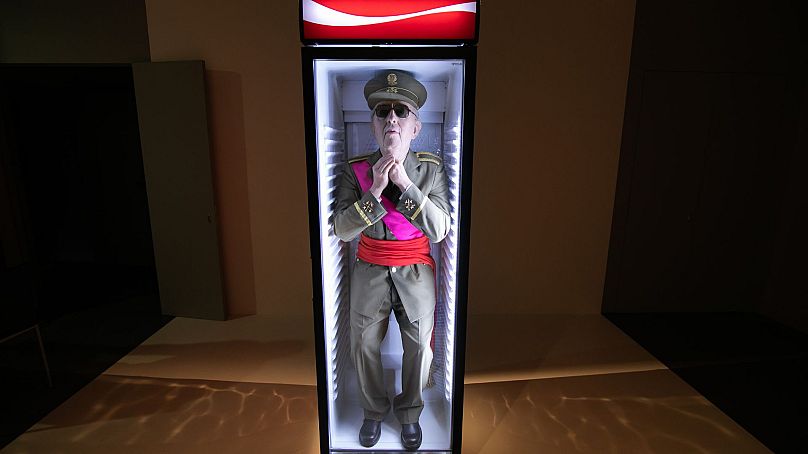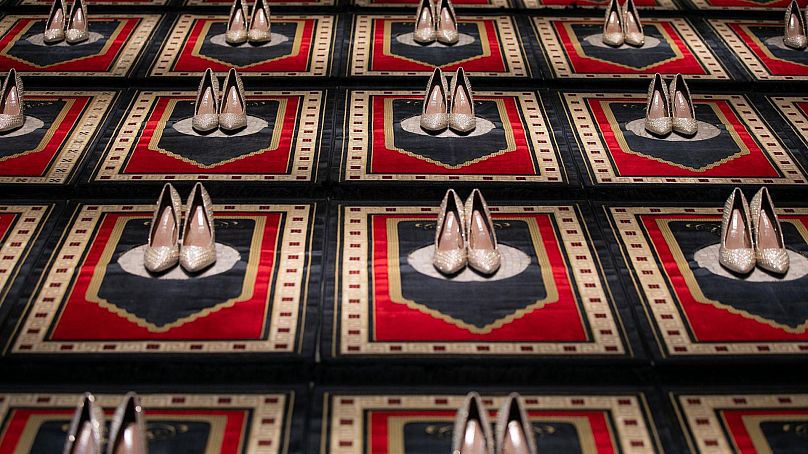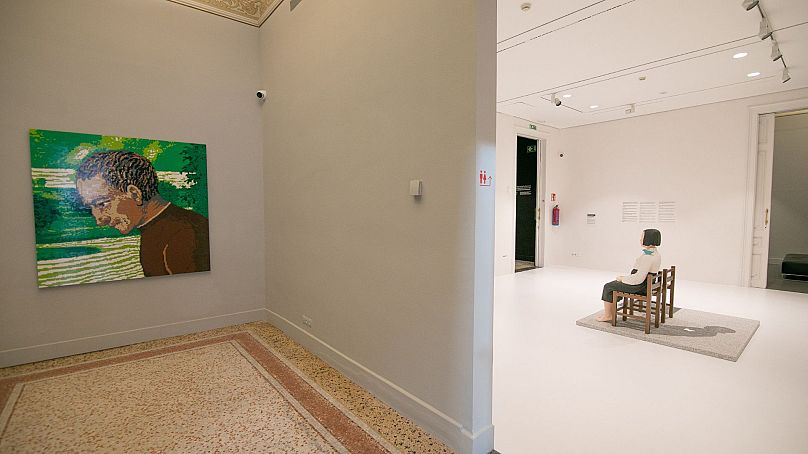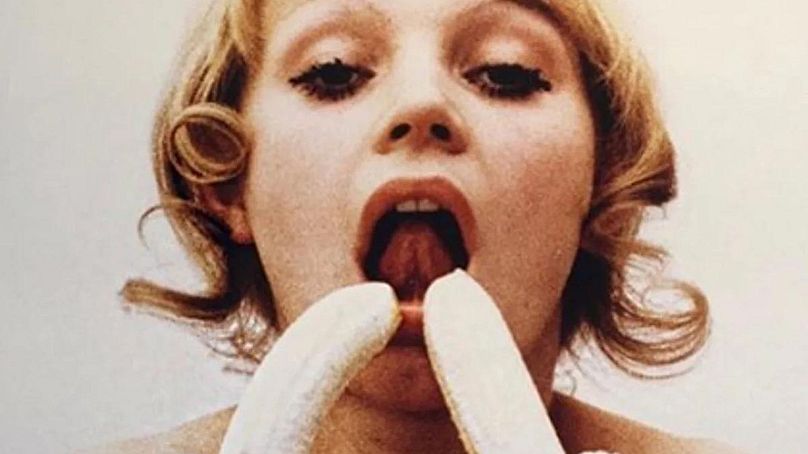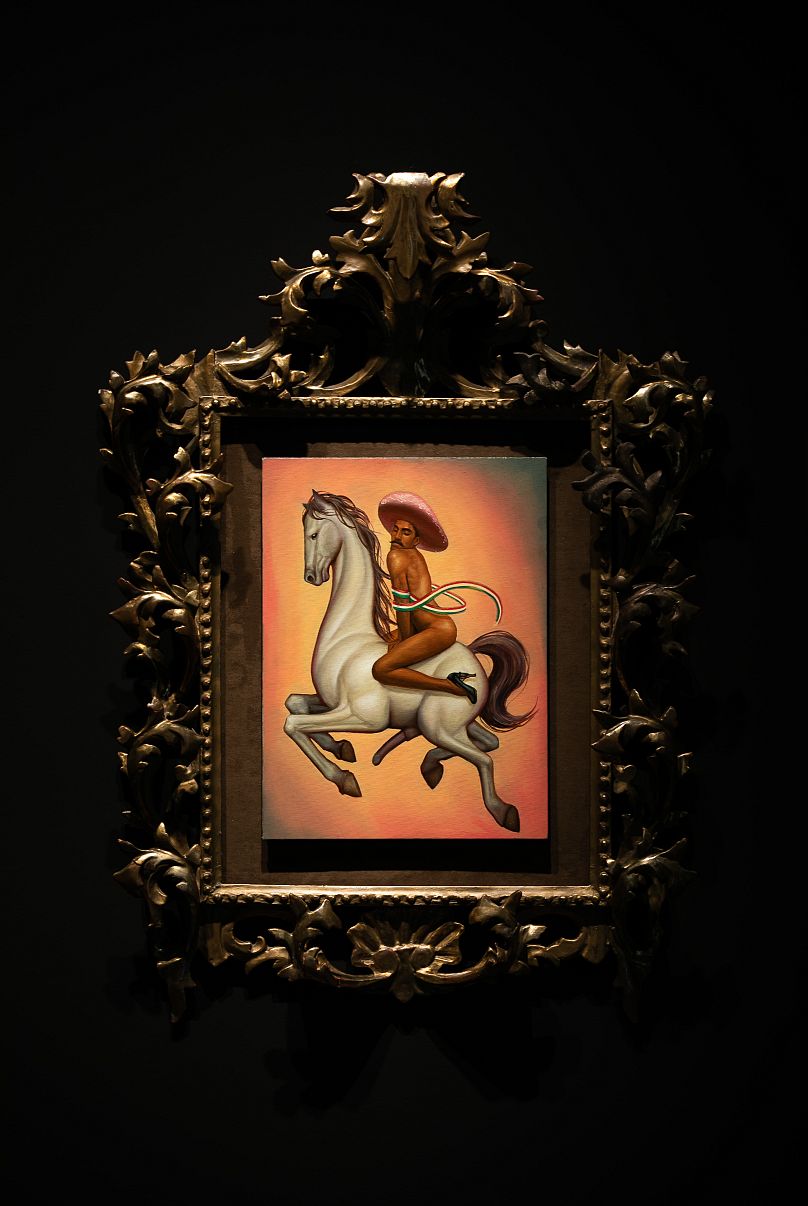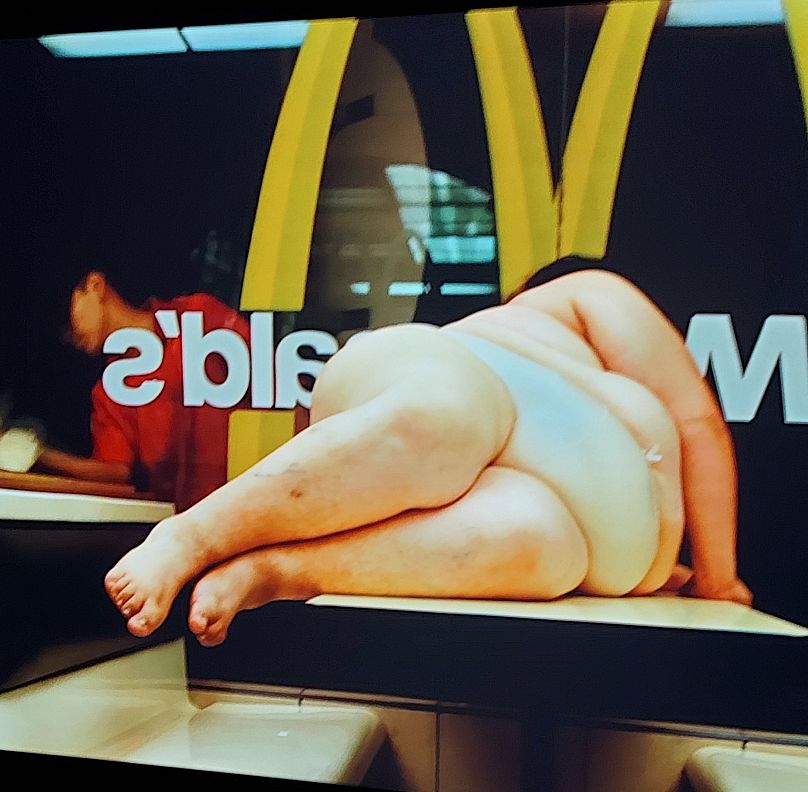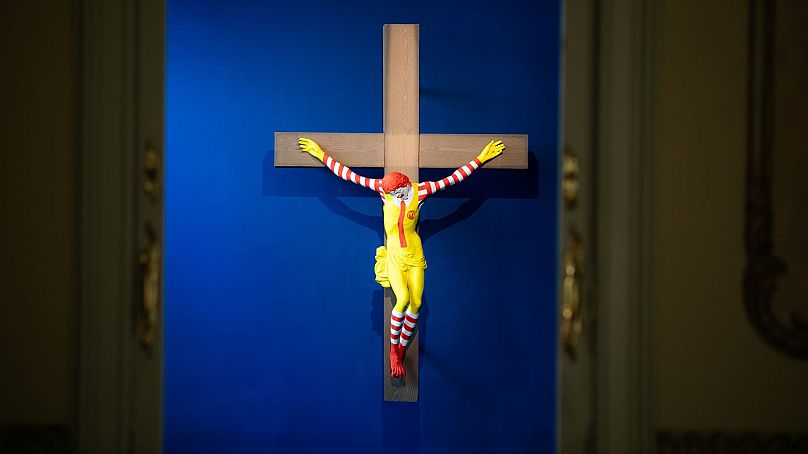A crucified Ronald McDonald clown, prayer mats adorned with stilettos and sketches by former Guantanamo prisoners take pride of place at a new museum in Spain devoted to previously censored art.
Banksy, Francisco de Goya, and Pablo Picasso share wall space in a new museum because they all have one unenviable thing in common: they faced censorship of one kind or another.
The Museu de l’Art Prohibit (Museum of Prohibited Art), which recently opened in Barcelona, is the world’s only collection of works which have been banned by authorities somewhere in the world or even by the artists themselves.
A painting of Donald Trump with a tiny penis, a woman licking a banana lasciviously and a set of glamorous high heels on Muslim prayer mats are among the eclectic mix of art amassed over five years by Spanish journalist and businessman Tatxo Benet.
Censorship in art
From works considered religious blasphemy to paintings or sketches touching on sexual taboos and political and social critiques, the art does not shy away from anything.
What gives the exhibition an extra edge is that next to every painting, video or sketch is an explanation of the reaction at the time. This is often illustrated with headlines from contemporary newspapers or quotes.
Carles Guerra, the curator of the exhibition which features 200 works, said the museum brings together censorship cases in which artists have been attacked, assaulted, or prosecuted.
“It is quite shocking to see that censorship is not so simple because of the very primitive ways of censorship in which art was denied a place to more sophisticated ways in which it was attacked. Censorship is constantly evolving,” he told Euronews Culture.
“At the same time, there is a constant reaction from the public who do not abide by this censorship and want to support the right to exist in the public place.”
Guerra said the exhibition attempted to give context by showing the reaction to controversial works.
“You see the work and you also see the reactions. We decided that every single work on display comes with a very in-depth research, with newspaper cuttings and ideas which were offended by difficult things be they religious, sexual or political issues,” he said.
As the Israel-Hamas war rages, Guerra said he was not worried about any reaction to pieces in the exhibition which criticised the place of women within Islam or the presence of a Palestinian artist.
Zoulikha Bouabdellah’s Silence Rouge et Blue consists of 30 prayer mats, each adorned with a pair of sequinned stiletto shoes.
In another section of the exhibition, a video by Palestinian artist Larissa Sansour is shown. In 2011, the French Elysée art prize was cancelled after a row with the French clothing label Lacoste, which withdrew its €24,000 sponsorship from the award.
Sansour’s work Nation State imagines a "Palestinian state rising from the ashes of the peace process".
Goya’s sketches Los Caprichos mark an important moment in criticism as the Spanish master decided not to show them.
“Goya was the first to apply auto-criticism, self-censorship. His works were about Spanish society and its attitude to subjects like religion,” Guerra said.
“He abandoned Spain and went to Bordeaux in France where he died. He became the first great self-critic. We need to fix the moment when a critical spark is taking place in the public sphere.”
In contrast, Picasso’s explicit sexual drawings attracted criticism in 1968 when the Russian Orthodox Church asked for posters advertising them to be removed from public places to protect children from “such degeneracy”.
In another part of the show, there is a series of works by former prisoners of Guantanamo Bay, the notorious US jail in Cuba for suspects accused of taking part in the 9/11 attacks. One shows the State of Liberty sinking into the water, while another drawing shows an eye crying behind a bricked-up wall.
The artworks by the freed prisoners caused outrage when they went on show in the United States in 2017.
Religion figures prominently but it is not hard to see why they offended established religions.
For instance, Con Flores a María by the Spanish artist Charo Corrales shows the image of the Virgin Mary. She has one hand between her legs and appears to be enjoying a more sexual than spiritual form of gratification.
Andres Serrano, an American artist, made a red image of Jesus Christ on the cross which was covered in the artist’s own urine. The work, called Piss Christ, outraged the church at the time. Similarly, another image by the Argentine Leon Ferrari shows Christ crucified on the wings of a US fighter plane which sparked protests.
Unsurprisingly, sex figures prominently.
The late Polish artist Natalia LL made a series of videos showing semi-naked women licking bananas in a suggestive way. It was supposed to be a criticism of Western pornography during the Communist era. When democracy returned, it was ironically banned.
British photographer Terry O’Neill’s photograph of Raquel Welch on the cross is one startling image.
He took the image after the film star said she felt like she was being “crucified” by the media for role in the 1966 film One Million Years BC, in which her leather bikini caused a stir.
O’Neill said he had been too scared to publish his picture of Welch in his portfolio until 30 years later.
Political art: From Trump to Saddam Hussein
It will come as no surprise that politics figures largely in the exhibition.
A naked Donald Trump with a tiny penis is the subject of Make America Great Again, by Illma Gore, which mimics the former US president’s campaign phrase.
A version of the Arbeit Macht Frei sign which greeted inmates of Auschwitz concentration camp features along with axes and other implements. When thieves stole the original in 2009, they tried to sell it for €150,000. Cuban Tania Bruguera made her version to reflect on history and its re-readings. She has suffered from censorship in her own country.
Similarly, an image by Fabian Chairez’s famous Mexican revolutionary Emiliano Zapata dressed in high heels and pink sombrero poked fun at the great man. It prompted demonstrations demanding it was closed down.
Closer to home, an image of the late Spanish dictator Francisco Franco dressed in military uniform but stuffed inside a Coca Cola vending machine is Eugenio Merino’s amusing take on the man whose shadow still looms long over the country.
Next to this is a case containing a model of the late Iraqi dictator Saddam Hussein in a case of formaldehyde, like a take on Damien Hirst’s shark (The Physical Impossibility of Death). The Saddam work is called Shark and was created by David Cerny, a Czech artist, who was jailed – briefly- for painting a work remembering the Russian invasion of Prague in 1968.
Again, the target of the criticism was the figure of Saddam Hussein, another dictator who may be dead but his figure still looms large over modern day Iraq which is in chaos years after a war which was supposed to rid the nation of his iron grip.
The culture of consumerism comes under fire. Yoshua Okón’s video called Freedom Fries: Still Life features a McDonald’s restaurant in which there is an obese, naked person. Outside there is a person cleaning windows. In 2014, London’s Tabernacle gallery withdrew the work because the museum felt it was “not suitable for the space”.
McJesus, a work by Finnish artist Jani Leinonen in which the figure of Ronald McDonald is seen crucified on the cross as if he were Jesus. But the difference is that Ronald is thinned down more like Christ. Again, it provoked protests outside the Haifa Museum of Art in Israel in 2019. The artist later claimed he asked the museum to take it down but this was not carried out.
In 2016, Chinese artist Ai Weiwei criticised Lego which, he claimed, had censored his work. He used Lego bricks to create portraits of four famous Italians who had been imprisoned or exiled for their beliefs: Dante Alighieri, Filippo Strozzi, Galileo Galilei and Girolamo Savonarola. But Lego refused to bulk order bricks because, they said, their products could not contain “political statements”.
Banksy’s take on police brutality features in a section in which also shows a series of posters used by Amnesty International to publicise the plight of political prisoners. The figure of a police officer with a gun and a smiley face is typical of the mystery artist.
The exhibition has no closing date which is a good thing because it merits a second or third look. It is so good.












